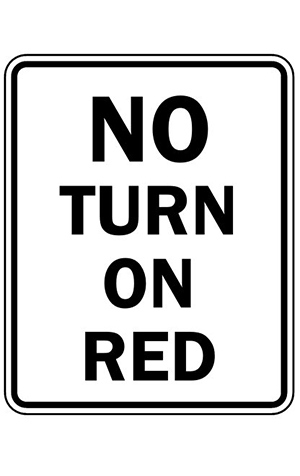Driving tips for Brits in Florida
The number one rule is to drive on the right – here the left side is the wrong side.
Obviously you’ll be hiring a car, so the driver’s side is on the right too. This difference can take a little while to get used to. Plus, many hire cars are automatic. If you’re uncomfortable driving an automatic, you’ll need to make it clear when organising your hire car that you want a “stick shift” – although this will undoubtedly limit your options somewhat.
Driving to your holiday home via the freeway can be quite a baptism of fire for the first-time-to-Florida holiday maker. The advice for Brits driving stateside used to emphasise that “undertaking” was not illegal and just part of the whole experience. Happily, Florida state law has now introduced a requirement for drivers to remain in the right-hand lane unless passing (you pass on the left) “except when overtaking and passing on the right is permitted” — which is the case on most multi-lane roadways. So, while passing on the right is only legal when there are two or more lanes of traffic moving in the same direction (or the vehicle you are passing is making a left turn, which is only sensible), the expressways continue to be a baptism of fire!*
If you’d rather have a more genteel introduction to driving in Florida, Ellis Exclusive Villas partner with a fantastic family-run company called Car on the Drive which will pick you up from the airport in your hire car and deliver you, your family, your luggage and your hire car to your holiday home as part of their service. If it’s your first time driving in the USA it’s a great service that allows you to build up your confidence slowly.
Another great way to build your confidence is to download and read the latest version of the State Driver’s Handbook before you go. These days, when we have access to this kind of resource online, there’s no excuse for not preparing before you go. It’ll give you greater confidence when you get there and also help you ensure that your holiday goes as smoothly as possible.
With that in mind, I guess we should look at the basics: who has the right-of-way in Florida, for a start. The answer is no one. The law only says who must yield right of way: every driver, motorcyclist, moped rider, bicyclist and pedestrian. So basically, all of us must yield if the circumstances require it – which is another good reason to swot up on the Florida drivers’ handbook before you go!
Some key things to remember are:
- Drink driving law is strictly enforced, so don’t let the holiday spirit get away with you. If you know you’ve got to drive at the other end, please don’t drink on the plane.
- Please be aware that it’s also illegal for passengers to be drinking in the vehicle too. Make sure you don’t have any open alcohol in the car – carry it in the boot (“trunk”). There’s an implied consent law that means, if you are driving, you’re assumed to have consented to drug and alcohol testing and must take any breathalyser test required of you by law enforcement officers. Be safe: don’t drink and drive.
- It is also now illegal to text while driving.
- You must ensure that all children have the appropriate seats and/or harnesses (“restraints”), so talk to your hire car company in advance and let them know what you need.
- If you’re trying to decide whether to obey the law enforcement officer or the road signs, go with the officer every time.

One of the main differences (aside a whole new spatial awareness being required and getting used to doing everything the other way around) is that, unless you see a “No turn on Red” sign at the junction, you can turn right on a red light IF it is clear and safe to do so. You must come to a stop first though.
Here are some more tips about stopping:
- At a stop sign, regardless of any oncoming traffic or not, you must STOP the vehicle before proceeding.
- When on a crossroads, the rule is stop, right of way is given to the first vehicle arriving at the crossroads.
- It’s also worth noting that if a school bus stops at a designated stop then traffic in both directions must stop.
Some expressways have lanes designed to encourage car sharing. If you see diamonds in the centre of the right hand lane, then this means it is reserved for car pooling and vehicles with two or more people in.
Apparently, it’s also against Florida Law to leave your keys in the vehicle after you’ve parked. Which seems only sensible – I wouldn’t want to explain that one to the hire car company!
And, finally, as in the UK, you must yield to emergency vehicles. But, in addition, you must move over or slow down when passing a stationary emergency vehicle on an expressway with two or more lanes.
IN SUMMARY:
- read the local guidance in advance of travelling – it’s especially useful to know who has right of way in which circumstances
- talk to your car hire company about your requirements carefully
- be sensible (no open alcohol in the car, no texting, a three second gap between you and the traffic in front) and you should stay safe.
If you are interested in booking car hire with me, please contact me on 0333 332 1411 (UK) or 321 710 8779 (USA).
* Earlier versions of this post incorrectly stated that vehicles are now compelled to drive on the right in all circumstances. Thanks to Peter from Car on the Drive who corrected us – there are certain circumstances where this is not the case. This post was edited on 10th March to reflect these comments.







